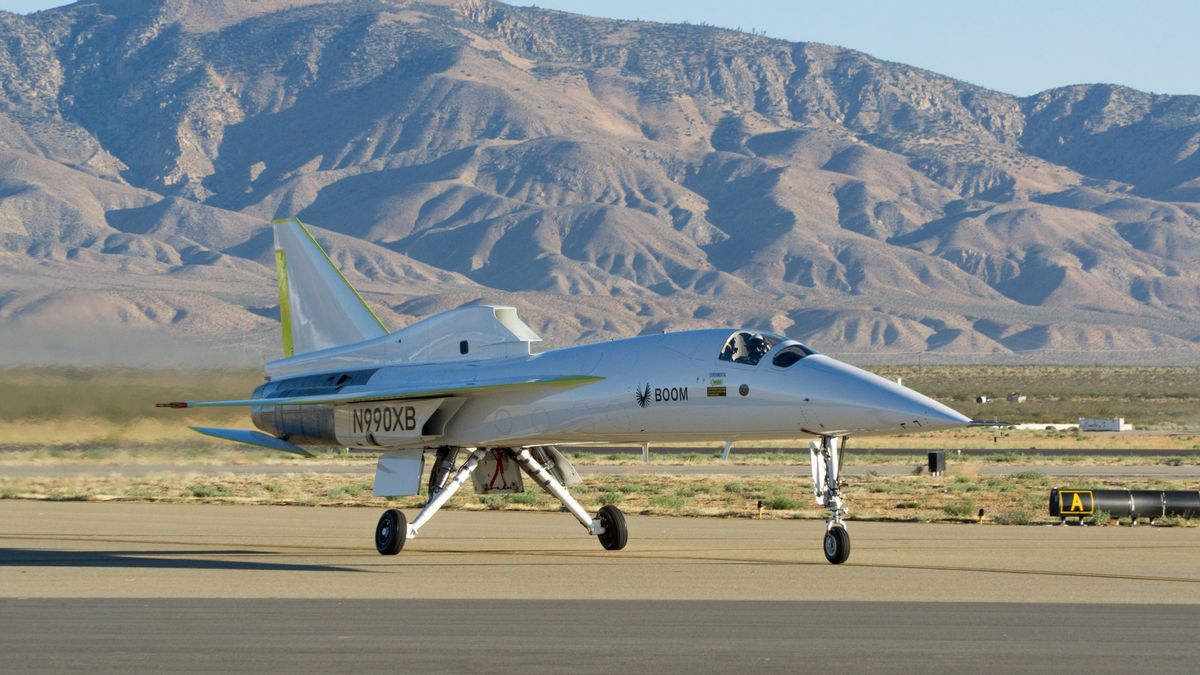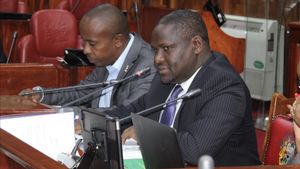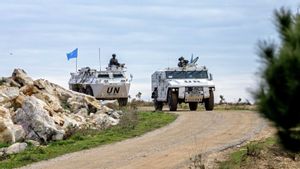Planes that can fly zero carbon emissions from London to New York in just 3.5 hours may sound too good to come true. But, believe me or not, that could come true in the next four years.
The Overture of Boom Supersonic, dubbed 'Children of Concorde', is predicted to be the 'fastest passenger plane in the world', reaching a Mach 1.7 speed (about 2.099 km/hour).
According to the company, a smaller Overture prototype, named the XB-1 Baby Boom, has completed an 'important moment' during testing on its first flight.
If the Baby Boom XB-1 passes the trial, Overture will be unveiled in 2026, before the aircraft's first flight in 2027 and commercial passenger flights by 2029.
This year, XB-1 Baby Boom moved from the company's studio in Centennial, Colorado to Mojave Air & Space Port in Mojave, California, to continue flight preparations.
The plane has just completed a'taxi testing' - a stage in the development of aircraft checking whether aircraft can travel on the runway at speed (without takeoff), the company explained.
"The recent progress achieved towards XB-1's first flight reflects the team's collective efforts to build and perform the world's first independently developed supersonic aircraft flight," said Blake Scholl, founder and CEO of Boom Supersonic, quoted by MailOnline.
Today, we announced the completion of several key milestones for XB-1, our technology demonstrator aircraft. Earlier this year, XB-1 was moved to the Mojave Air & Space Port in Mojave, California to continue preparations for flight. The aircraft has undergone extensive ground… pic.twitter.com/pZmn06P99Q
— Boom Supersonic (@boomaero) August 24, 2023
Today, we announced the complement of several key milestones for XB-1, our technology demonstrator aircraft. Early this year, XB-1 was moved to the Mojave Air & Space Port in Mojave, California to continuum preparations for flight. The aircraft has undergone extensive ground... pic.twitter.com/pZmn06P99Q
With a length of 68 feet, the XB-1 Baby Boom is about a third of the size of the Overture (201 feet), which will later carry 80-90 paid passengers, both for businesses and holidays.
Overture, which is still under development, will be built to operate with a 100 percent sustainable aviation fuel (SAF), made of sustainable and renewable sources, not fossil fuels.
Importantly, Overture will have a calmer'supersonic explosion' than the original Concorde, which is notorious for its annoying noise.
Sonic explosions occur when shock waves from objects moving through the air faster than the speed of sound merge before reaching the ground.
Overture is driven by four powerful wing engines, requiring lower thrust for each engine. Overall, it reduces noise levels, according to Boom Supersonic.
However, Overture will sail on Mach 1.7 - less than the Koncorde maximum cruising speed on Mach 2.04 (2.519 km/hour).
Nonetheless, big companies in the industry interested in reducing their carbon footprint have booked Overture planes when they are ready, including United Airlines and American Airlines.
In addition to successful taxi flights, the company's one-thirds model, the XB-1 Baby Boom, has received a 'experimental airworthiness certificate', which is given to more unconventional flying machines so manufacturers can conduct test flights.
"The certification was issued by the Federal Aviation Administration (FAA) after a 'detailed aircraft inspection," Boom Supersonic said. Agreements with airspace authorities have also allowed aircraft flights over the Mojave desert.
The first flight of the history of the XB-1 Boom Supersonic will take place in the same airspace where the first aircraft fly faster than the speed of sound.
Captain Charles 'Chuck' Yeager first broke a buzz on the Bell X-1 rocket plane - from which the new plane borrowed the name - in October 1947.
The engine-backed legendary rocket plane, designed and built in 1945, reaches a speed of 700 miles (1,127 kilometers) per hour.
"Adil bahwa XB-1 sekarang bergerak menuju penerbangan pertama di Mojave Air & Space Port, tempat berlangsungnya lebih dari 50 penerbangan pertama dan peristiwa penerbangan penting lainnya," kata Bill Shoemaker, pilot utama pilot uji coba Boom Supersonic.
VOIR éGALEMENT:
"I look forward to flying with XB-1 here, building the achievements of other talented engineers and pilots that inspire us every day to make supersonic travel mainstream," he added.
Boom Supersonic is one of the companies working on the development of a commercial aircraft called the 'Child of Concorde', in the race to become the successor to an iconic British-French-made aircraft, which first managed to fly in March 1969.
Concorde made its first commercial flight in 1976, but was withdrawn from service in October 2003 following the deadly Air France crash on Flight 4590.
Another reason for Concorde's retirement is the high cost of fuel, concerns about its noise, and preference for aircraft tickets at a lower price than speed.
No government or manufacturer has since been able to build commercial aircraft that can fly faster than the speed of sound.
The English, Chinese, Japanese, Arabic, and French versions are automatically generated by the AI. So there may still be inaccuracies in translating, please always see Indonesian as our main language. (system supported by DigitalSiber.id)














